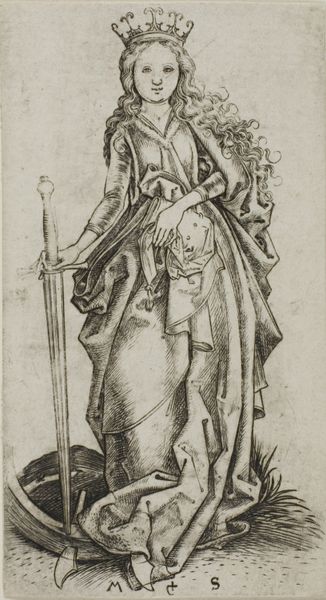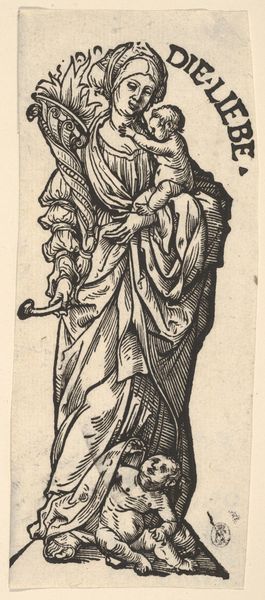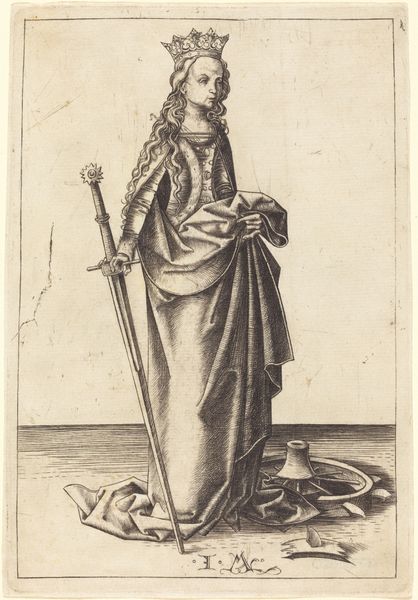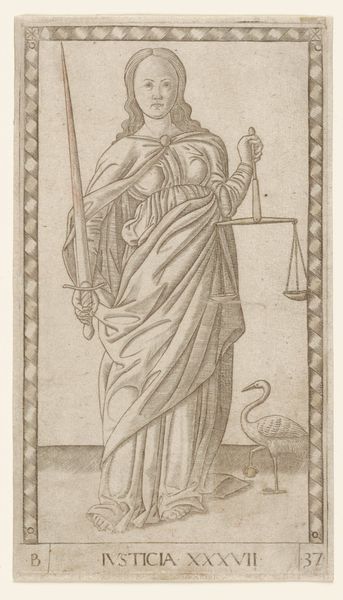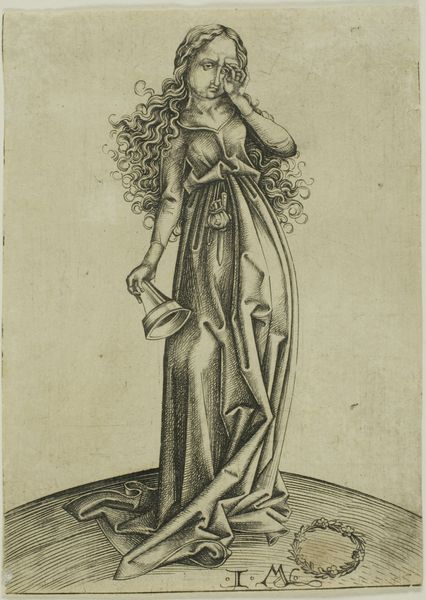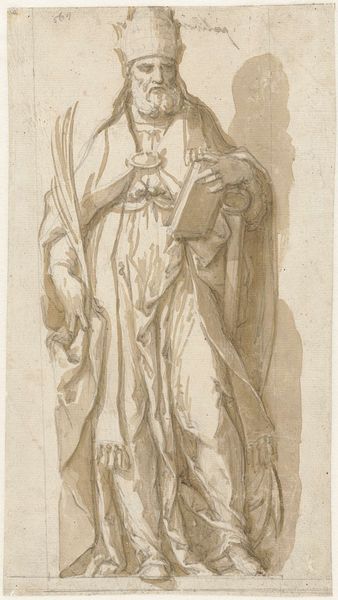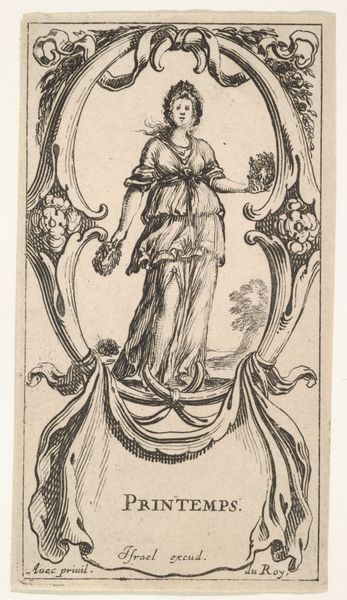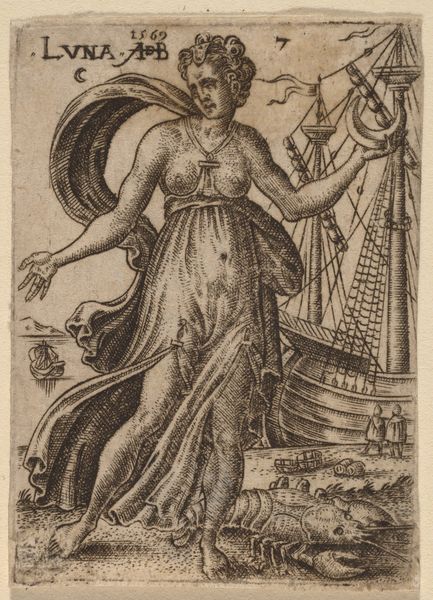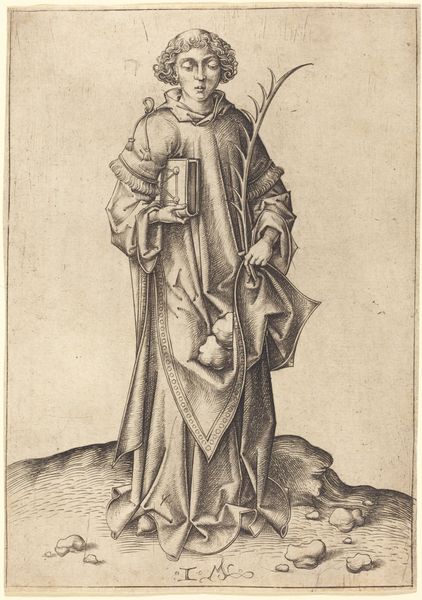
print, engraving
#
portrait
#
medieval
# print
#
figuration
#
history-painting
#
northern-renaissance
#
engraving
Copyright: National Gallery of Art: CC0 1.0
Curator: This is Israhel van Meckenem's "Saint Agatha," an engraving dating from around 1465. Editor: My goodness, she looks… melancholy. Or perhaps simply resigned? It’s hard to tell from the severe lines, but there's a heaviness about her downward gaze. Curator: Observe the precise hatching and cross-hatching that define the folds of her garments, creating a sense of volume and texture. Note, too, the intricate details of her halo and the pincers she holds—these details articulate van Meckenem's skillful handling of the burin. Editor: Those pincers! And she's holding what appears to be… breasts? Am I seeing that right? Curator: Indeed. Saint Agatha is often depicted with the instruments of her martyrdom—the pincers and her severed breasts, a brutal consequence of her refusal to renounce her Christian faith. Editor: A martyr… It casts a different light, doesn't it? The resignation now seems more like quiet defiance, bearing the unbearable. You know, it is strange that such violence can give way to beauty in art. Curator: The engraving also highlights a key transitional period in printmaking. The subject matter reflects medieval religious themes, yet the naturalistic representation of the figure gestures toward the Renaissance. The very controlled handling of line serves to further reinforce a more calculated and objective sensibility of perception. Editor: It’s funny how something so clearly rooted in faith can also become an object of formal study. Makes you wonder what Van Meckenem thought about it all, eh? Did he believe every mark he made or just focus on getting the form right? Curator: His subjective intentions are irretrievable, but we may use formal analysis to explore what this early print work reveals of Late Medieval notions of martyrdom. It gives us invaluable insight into shifts in perception during that time. Editor: Well said. For me, I think it's a reminder that art can transform even the most brutal stories into something... strangely beautiful. Curator: Precisely. It exemplifies art’s capacity to confront difficult subjects with compositional structure and emotional complexity, promoting sustained contemplation.
Comments
No comments
Be the first to comment and join the conversation on the ultimate creative platform.

